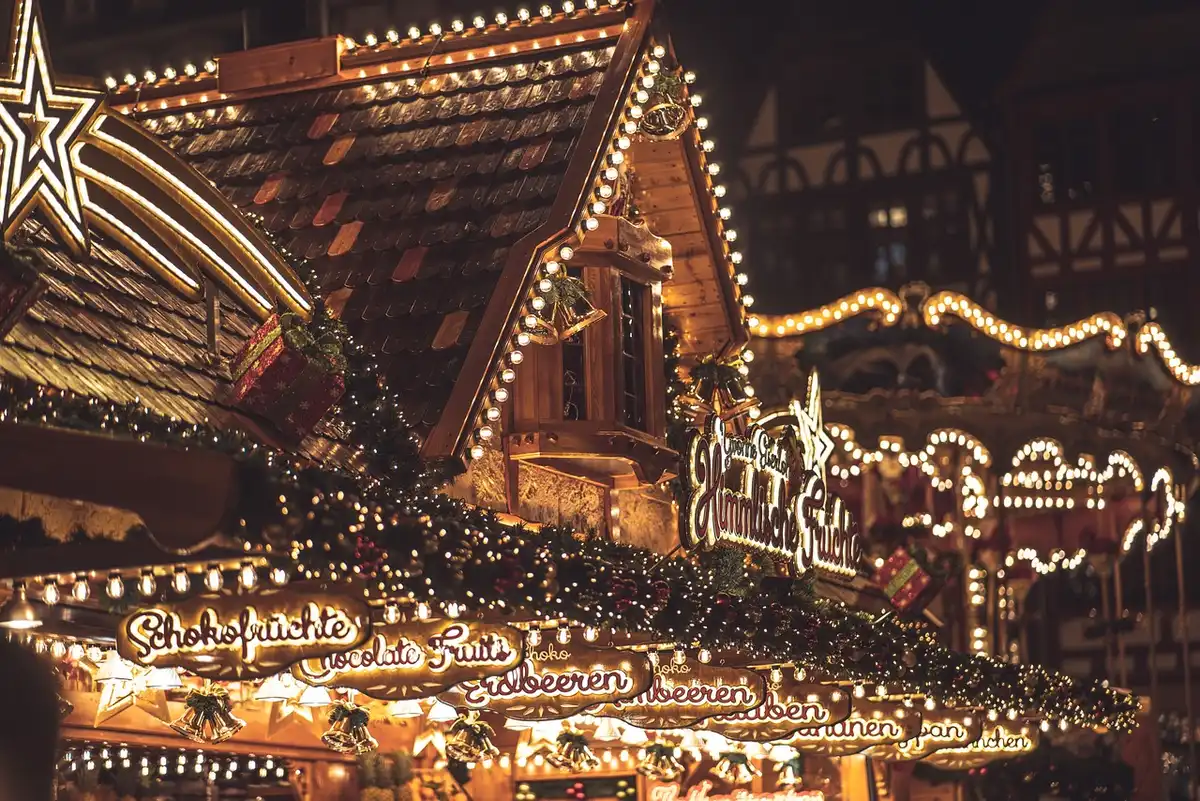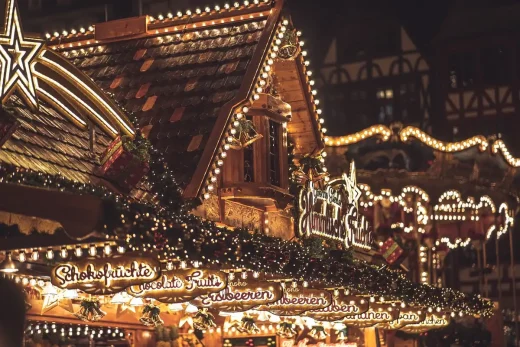Incorporating energy-efficient holiday lighting into architectural design, Lighting Designs
Incorporating Energy-Efficient Holiday Lighting into Architectural Design
7 November 2024
As the holiday season approaches, there is a growing trend toward combining festive lighting with energy-efficient solutions in architectural design. This concept not only enhances the aesthetic appeal but also aligns with sustainable practices that are crucial in contemporary design. Incorporating energy-efficient lighting can significantly reduce power consumption while still creating a captivating holiday display.
Architects and designers are increasingly exploring LED lights and solar-powered decorations as viable options. These technologies provide a longer lifespan and reduced energy expenditure compared to traditional lighting methods, making them an attractive choice for environmentally-conscious projects. Such integration enhances the structure’s visual appeal and promotes eco-friendly living.
The synergy between festive aesthetics and energy efficiency offers the opportunity to create visually stunning yet sustainable environments. This approach reflects a broader commitment to developing designs that minimize environmental impact without sacrificing the beauty and spirit of the season.
Understanding Energy-Efficient Holiday Lighting
Energy-efficient holiday lighting has become crucial in sustainable architectural design. Innovations in lighting technology, such as LED and solar solutions, offer viable options for incorporating festive decor while minimizing energy consumption, especially in vibrant areas like Dallas.
Historical Development of Holiday Lighting
The journey of holiday lighting began in the late 19th century with the introduction of incandescent bulbs. Initially, these were expensive and out of reach for many. Over time, the production process became more economical, making them widely accessible.
The transition from incandescent to more energy-efficient technologies, particularly LEDs, marked a significant advancement. LEDs are renowned for their low power usage, extended lifespan, and reduced environmental impact. The rising focus on energy conservation drove this shift. In cities like Dallas, where holiday lighting is a significant attraction, sustainability has become a priority. The evolution of these technologies reflects broader societal changes towards energy efficiency and environmental awareness.
Benefits of Energy-Efficient Lighting in Architecture
Energy-efficient lighting offers numerous advantages when integrated into architectural designs. It substantially reduces energy costs because LEDs consume up to 90% less energy than conventional bulbs. This can lead to significant savings, particularly in large-scale applications.
Another benefit is the reduction in greenhouse gas emissions. By using less electricity, power plants burn fewer fossil fuels, thus lowering emissions. Furthermore, modern lighting solutions offer design flexibility. They come in various colors and styles, which allows architects and designers to create visually appealing, sustainable structures. Energy-efficient holiday lighting enhances aesthetic and functional aspects without compromising environmental responsibility.
Examining Energy Consumption of Holiday Lights
Holiday lighting can significantly impact energy consumption, especially during peak festive seasons. Traditional bulbs are notorious for high electricity usage. Their inefficiency contributes to spikes in both energy bills and carbon footprints, making them less desirable options today.
LEDs, in contrast, use approximately 80-90% less energy. Their longevity also means less frequent replacements, which translates to further reductions in waste and resource use. In cities like Dallas, opting for energy-efficient holiday lighting has been highly effective in managing energy demand during the winter months. These practical choices benefit both the environment and the economy, demonstrating the importance of energy-efficient solutions in modern architectural practices.
Design Strategies for Integrating Energy-Efficient Lighting
Energy-efficient lighting is crucial in modern architecture. Through the use of LED technology, smart controls, and thoughtful material selection, architects can seamlessly integrate lighting solutions that are both sustainable and visually appealing. These strategies not only save energy but also enhance the overall aesthetic and functionality of spaces.
Incorporating LED Technology
LED lights offer significant energy savings and longer life spans compared to traditional bulbs. This technology enables flexibility in design due to its compact size and durability. Designers can employ LEDs in various applications, from highlighting architectural features to providing general illumination.
LEDs are available in multiple color temperatures and intensities, allowing for customization according to the desired ambiance. Incorporating dimmable LEDs further adds to energy savings by reducing power use when full brightness is not necessary.
The ability of LEDs to produce minimal heat makes them suitable for integration into sensitive materials or tight spaces. This adaptability opens up new possibilities in lighting design, promoting innovative solutions that align with contemporary architectural goals.
Using Smart Lighting Controls
Smart lighting controls enhance energy efficiency by automating and optimizing system performance. These controls can include timers, motion sensors, and daylight harvesting technologies that adjust lighting based on occupancy and natural light availability.
Integrating smart systems allows for precise control over lighting schedules, reducing energy consumption during low-use periods. Remote management and scheduling through apps or centralized systems provide additional convenience and control.
Implementing these technologies not only conserves energy but also extends the lighting system’s lifespan. By reducing wear and tear on fixtures, smart controls contribute to more sustainable architecture.
Material and Fixture Considerations for Installation
Selecting appropriate materials and fixtures is vital for successful energy-efficient lighting integration. Sustainable materials that reflect or diffuse light efficiently can enhance the performance of energy-saving bulbs.
Fixtures should be chosen for their ability to direct light where needed, reducing wastage. Properly designed fixtures can control light distribution, minimizing glare and enhancing user comfort.
Energy-efficient fixtures often come with options for integrating sensors and controls, facilitating seamless design. Designers are encouraged to evaluate various fixture styles to complement architectural aesthetics while meeting energy goals. This careful selection process ensures that lighting solutions are both functional and harmonious within the built environment.
Energy Efficiency
The integration of energy-efficient holiday lighting into architectural designs is reshaping commercial and residential spaces. Innovative approaches highlight practical benefits such as decreased energy consumption and enhanced visual appeal.
Christmas light installation service in Dallas has adopted sustainable lighting to serve large outdoor and indoor spaces, leading to lower energy bills during the holiday season. Homeowners increasingly use sustainable lighting solutions to lower environmental impact.
Series of family homes implemented solar-powered LED holiday lights. These lights store energy during the day via solar panels, illuminating evenings without raising electricity costs.
Additionally, a collaborative effort between architects and electricians to retrofit traditional lighting with efficient models has been successful. Homes utilizing smart home technology to manage lighting based on time and activity demonstrate significant reductions in power consumption, marrying aesthetic appeal with sustainability.
Comments on this guide to Incorporating Energy-Efficient Holiday Lighting into Architectural Design article are welcome.
Lighting Design
Outdoor Lighting
Trendsetting Outdoor Lighting Ideas for 2024
Smart lighting innovations in architectural design
Outdoor lighting ultimate guide
Buildings
Education Building Designs – architectural selection below:
Syvälahti Education Centre, Turku, Finland
Design: Verstas Architects
Syvälahti Education Centre Turku
The University of Hong Kong Medical School Building, Li Ka Shing Faculty of Medicine, 21 Sassoon Road, Sandy Bay, HK
Design: Atelier Nuno Architects
The University of Hong Kong Medical School
Comments / photos for the Incorporating Energy-Efficient Holiday Lighting into Architectural Design page welcome.


